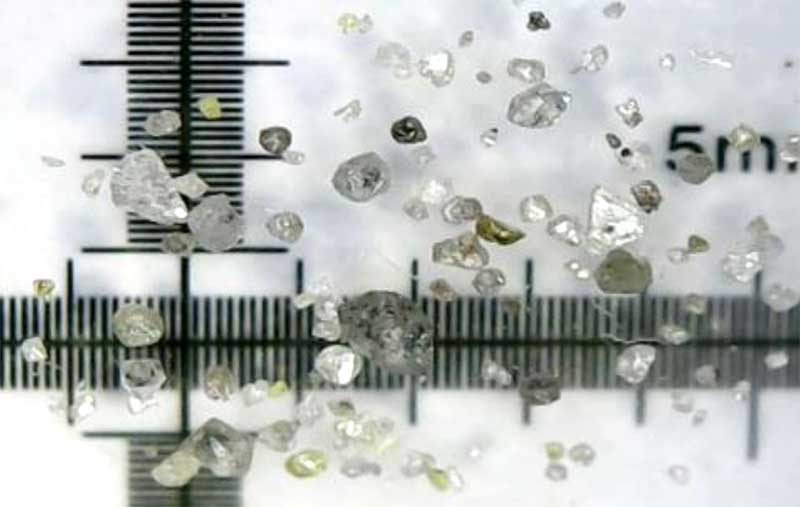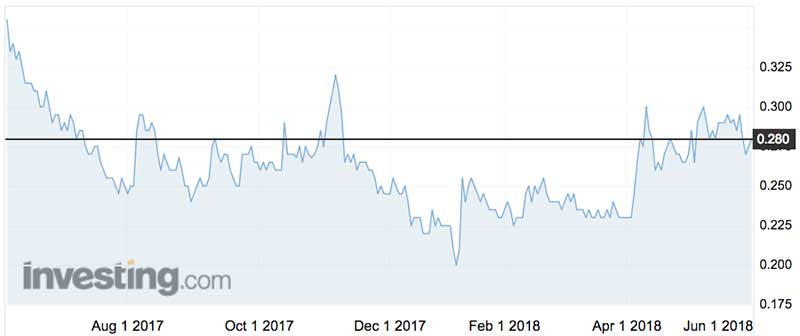You might be interested in
News
Market Highlights: Records in sight for gold, Bitcoin; US chipmaker joins S&P500 and 5 small caps to watch
News
Hot Money Monday: Herd mentality and FOMO linked to why momentum trading is such a success
Mining
Mining
Excitement is building around Lucapa’s new drilling campaign at its Brooking project in Western Australia, writes Barry FitzGerald in his Garimpeiro column
One of the most anticipated exploration programs in recent times is about to kick off at Lucapa’s Brooking diamond project in Western Australia’s remote West Kimberley region.
The drilling campaign comes at a time of upheaval in the global diamond market caused by diamond king De Beers announcing it will begin producing lab-grown synthetic diamonds for a new fashion jewellery line — something it said it would never do.
More later on De Beer’s lab-grown diamonds — as distinct from natural diamonds formed in the bowels of the earth billions of years ago.
First up, the excitement building around Lucapa’s new drilling campaign at Brooking.
It was the Little Spring Creek prospect within the broader Brooking project area that generated excitement in January when Lucapa (ASX:LOM) reported results from the LSC-01 drill hole, completed just before the wet seasons closed in last year.
Lucapa reported it had recovered 119 diamonds from 86.8kg of core samples collected from the drill hole into the Little Spring Creek lamproite (the world’s number two source of diamonds after kimberlite).

To recover any diamonds from a 63mm diameter hole would have been exciting.
But to recover 119 of the sparklers — seven were macro-diamonds (more than 0.5mm in size), and 112 were micro-diamonds (less than 0.5mm) – took the excitement to another level, leaving the market itching for follow-up work in the 2018 dry season.
Any day now Lucapa is expected to confirm the first of a new 10-hole drilling program in to the Little Spring lamproite has started.
That will make for interesting times in the months ahead. Lucapa last traded at 28c for a market capitalisation of $126 million — the bulk of which reflects the company’s African diamond production interests.
Drill sites in the latest Brooking program have been selected based on geophysical survey data indicating that last year’s discovery hole – which intersected 70m of diamond-bearing lamproite from near surface — was drilled towards the south-east edge of the main geophysical signature.
A busy 2018 for African interests
While the market hangs out for first results from the Brooking drilling program, Lucapa’s African diamond production interests are also in for a busy 2018.
The search for the kimberlite source of high-value alluvial diamonds being produced at its Lulo operation in Angola (it’s where Lucapa recently recovered a 46 carat gem quality pink diamond now being held for later sale) is stepping up.

And the second-half of the year will see first production from a redeveloped and expanded Mothae kimberlite mine in Lesotho.
In company valuation terms, Mothae is important to Lucapa because unlike alluvial operations which can be difficult to model, it comes with a stock exchange-compliant diamond resource of more than 1 million carats (to a depth of 300m) at an average modelled value of $US1063 a carat in the rough.
De Beers shock announcement
We asked Lucapa managing director Stephen Wetherall what he thought of the shock announcement from De Beers that it would enter the lab-made diamond jewellery market. (Lab-made are the same as natural diamonds but given they are all grown atom by atom from a diamond seed in a plasma reactor over a month, there is nothing unique about them).
“I see it as very positive for the natural sector because synthetic stones have been passed off as being natural in the past, trying to get the (higher) price for natural stones,’’ Wetherall said.
“And as De Beers is the biggest producer of natural diamonds by value, there is no way they would be launching this strategy to compete with that and perhaps devalue their production from all their mines around the world.’’
Wetherall, a former De Beers executive, said the move by his old employer reflects research which has identified that younger people want access to diamonds now but find naturally produced diamonds are at a price point they cannot afford.
Research over the decades also shows that once someone owns a diamond, they are more likely to own a second, or a third.
“By introducing a cheaper, fun fashion line, De Beers is out to get people buying diamonds at a much earlier age and I think that can only have a very positive effect for the natural diamond producers,’’ Wetherall said.
The big threat from the De Beers move is to the current synthetic producers which sell one carat stones for $US3,500 a carat compared with $8,000 a carat gem quality natural stones attract. De Beers’ lab-made line (it has produced lab-made diamonds for industrial applications for decades) will sell from a game-changing $US800 a carat.